“Most Holy Spirit, who didst brood
Upon the chaos, wild and rude,
And bid its angry tumult cease,
And give, for fierce confusion, peace;
Oh, hear us when we cry to Thee
For those in peril on the sea….”
William Whiting (1825-1878)
The circumstances of a warship’s lineage and history, including its end of days, sometimes assume both heroic and dramatically calamitous features. Between 1943 and 1946, fifty-eight US Navy Destroyers of the Sumner class were built in eleven shipyards. Although somewhat slower owing to greater displacement, Sumner vessels were distinguished from their predecessor classes primarily by having a slightly wider beam, adoption of twin rudders, and an enormous firepower that could be directed forward. A great many served in the Pacific, and the USS Frank E. Evans was among them. Eventually, their numbers simply became obsolete; some were lost in battle or damaged beyond repair. Today, only one of the Sumners survives; at Patriot’s Point Naval and Maritime Museum, South Carolina, the USS Laffey DD-724, aka “The ship that would not die.”
In Honor of BGen Frank E. Evans: A Legacy of Service
The Destroyer DD-754 was named for BGen Frank E. Evans (1876-1942), USMC (Ret), who enlisted during the Spanish-American War and was soon commissioned serving aboard Navy warships then and during the Philippine-American War; known as a skilled rifle shot. He was recalled to active duty for WWI service with the AEF, earning the Navy Cross and Meritorious Service Citation for performance during Chateau Thierry, Belleau Wood, and later at St-Mihiel. He continued in uniform until 1940. His decorations included the Purple Heart, the WWI Victory Medal with two clasps, the Haiti Expeditionary Medal, the French Fourragere of the Croix de Guerre, and the French Legion of Honor.
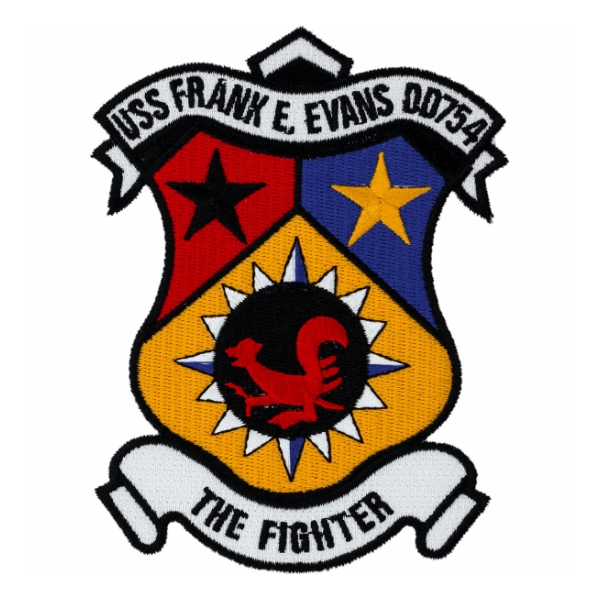
Of the Allen M. Sumner class, the Evans keel was laid down in April 1944 at Bethlehem Steel, Staten Island, and launched in October that same year, sponsored by Mrs. Allean Evans, widow of the ship’s namesake. The 2.2-ton super-destroyer was commissioned in February 1945 to begin nearly 25 years of service in three wars of the Pacific Theater. Her assignments included convoy escort, fighter director, picket duty, screening cargo and troopships, anti-submarine patrol, troop movements, anti-aircraft gunnery, rescues at sea or from land, post-war occupation, Japanese surrender enforcement, covering and suppressing fire, humanitarian aid to US prisoners and Allied civilians, flagship, landing craft support, mail runs, and training until June 1946. She returned to Mare Island in 1947. She was refitted at Hunters Point, transported ammunition, and was decommissioned in 1949 at NS San Diego. The Evans was again activated in 1950 there and sailed to join the Seventh Fleet, as hostilities worsened on the Korean peninsula, to combine with the ten ships of Task Force 77. During the siege of Wonsan and in several other battles, she engaged communist shore batteries eleven times and regularly fought back against enemy incoming. Her crew proudly called her “The Gray Ghost,” “The Fighter,” or “The Lucky Evans,” and she participated in formations with a number of the more famous Navy ships, including the USS Missouri, before coming back home after a cruise of almost 52,000 miles. In 1952 she returned to Korean War service for a second time until the conflict wound down. “From 1954 through 1960, Frank E. Evans completed five tours of duty in the western Pacific, as well as joining extensive training operations along the [US] west coast and in the Hawaiian Islands, occasionally with Canadian naval ships.”
All in all, taken together in orders of battle and stations, the USS Frank E. Evans touched in practically every notable waters and port of call anywhere in the Pacific area of operations from Midway, to Pago Pago, Subic Bay, Pearl Harbor, Yokosuka, Okinawa, Gulf of Tonkin, Hong Kong and points in between with a wide variety of battle groups and Task Forces, in war and peace. In the early 1960s, she was physically and technically upgraded as part of FRAM II. Starting in 1966-67, she joined with teams that included the Oriskany, Kearsarge, Franklin D. Roosevelt, and Constellation during Vietnam, Operation Market Time, and later in support of US Coast Guard activities attempting to interdict enemy supply in theater, performing all the activities she’d become accustomed to and highly skilled at since her service first began.
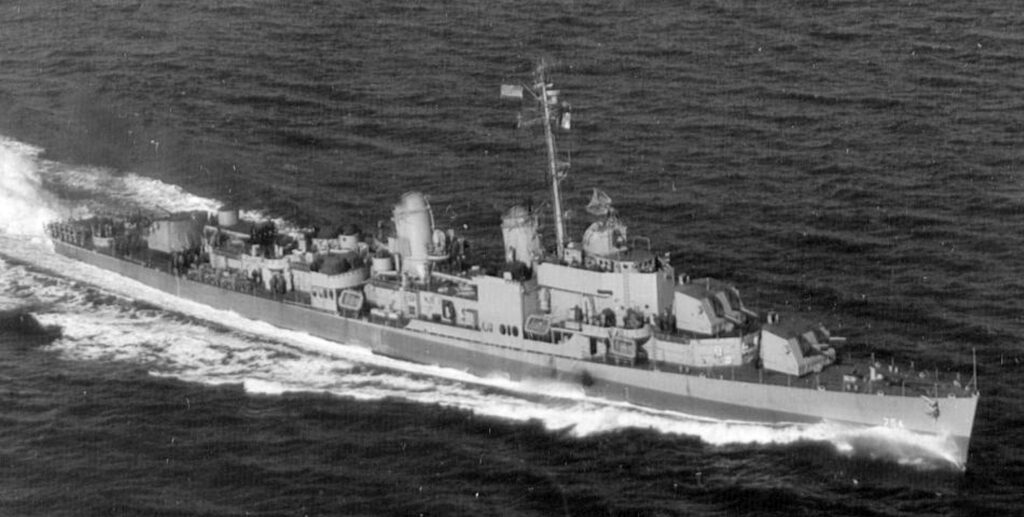
Yet, the valiant constancy of the Evans was not ready to end. “The Vietnamese Tet lunar holiday of 1968 ushered in the Year of the Monkey, but more than 80,000 People’s Army of Vietnam (PAVN) and PLAF troops attacked throughout South Vietnam as the Tet holiday began on 30 and 31 January 1968… On the night of January 2nd, Salted Flakes 26D directed the ship’s shooting onto enemy infiltration routes, a bivouac area, and a staging area. Frank E. Evans opened fire from a range of 14,000 yards, opened to 15,100, and closed to 11,800 before she ceased fire after throwing nine 5-inch variable time nonfragmenting and 171 anti-aircraft common rounds, along with a single white phosphorous shell, toward the enemy.” And, when North Korea seized our naval intelligence vessel USS Pueblo that year, the Evans was sent to aid in operations until late March.
Along with necessary and routine maintenance allowing its crew to recuperate in various stateside ports from San Diego and Long Beach to Portland, the ship was active and alert on intense duty all along, returning again to a familiar South China Sea. In May 1969, “Frank E. Evans fired a staggering 278 5-inch variable time nonfragmenting, 717 high capacity, 662 anti-aircraft common, 86 white phosphorous, and 95 illumination rounds during [a] battle. Following Daring Rebel, she turned from the fighting and arrived at Subic Bay….”
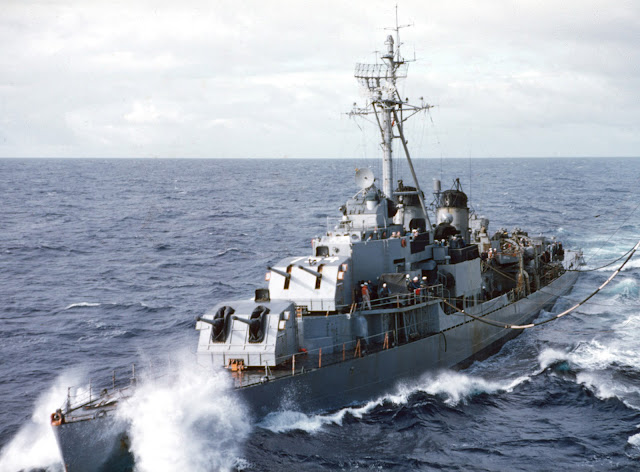
Navy TWS lists 126 registered members who had served aboard the USS Frank E. Evans at various times. An unofficial summary of the tragic conclusion is also included with the vessel’s Unit History published there as follows:
“In calm seas a little after 0300 on June 3rd, 1969, the Destroyer DD754 Frank E. Evans was participating in exercise SEA SPIRIT in the South China Sea with elements of the Royal Australian Navy and other allied navies. The Evans was operating [under darken ship conditions] as right flank escort in company with the Australian aircraft carrier HMAS Melbourne. At flying stations, Melbourne signaled Evans, which was to port of the carrier, to take station astern of her. The most plausible action by Evans would have been to make a turn to port (away from the carrier) and describe a circle, taking station astern of the carrier. Because of confusion as to Melbourne’s course, intentions, and errors of judgment, instead of turning to port, Evans turned to starboard onto a collision course. After being warned by Melbourne, she came hard right, while Melbourne simultaneously (or nearly so) came hard left. Evans was cut in half in the ensuing collision. Her bow section sank in two minutes into 1,100 fathoms, taking 74 of her crew down with it. At the time of the collision, Evans’s captain was asleep. The officer of the deck failed to notify him when he executed the station change as required by the Commanding Officer’s standing orders. The Evans was stricken from the Naval Vessel Register on July 1st, 1969. The stern section was salvaged and sunk as a target in Subic Bay on October 10th, 1969.”

USS Frank E. Evans – The Collision and Tragic End
The violent impact of the ship against ship was reportedly so immense that an Evans lookout was thrown by it on to the Melbourne’s flight deck. For the next fifteen hours, all possible efforts were made by several nearby vessels to render aid and rescue. One hundred ninety-nine survivors were found; Evans’s Cmdr Albert McLemore and LtJG Ronald Ramsey, OOD, among them. The remaining ship’s company, with immediate assistance from nearby crews, fought hard to keep what was left of the Evans’ stern section from sinking. That portion stayed afloat and was towed by the Tawasa AFT-92 back to Subic beyond repair. The greatly damaged HMAS Melbourne was restored to duty until decommissioned in 1982 and scrapped. The seventy-four, including twenty-two Californians, whose lives were lost that morning, with photographs of each one may be found there. Included among the casualties were three Sage family brothers, from Niobrara, Nebraska; one of whom was on signal duty as the other two slept at the time of the collision. Despite an outpouring of public sentiment that arose with the 1942 loss of five Iowan Sullivan brothers aboard the USS Juneau, this family had remained together.
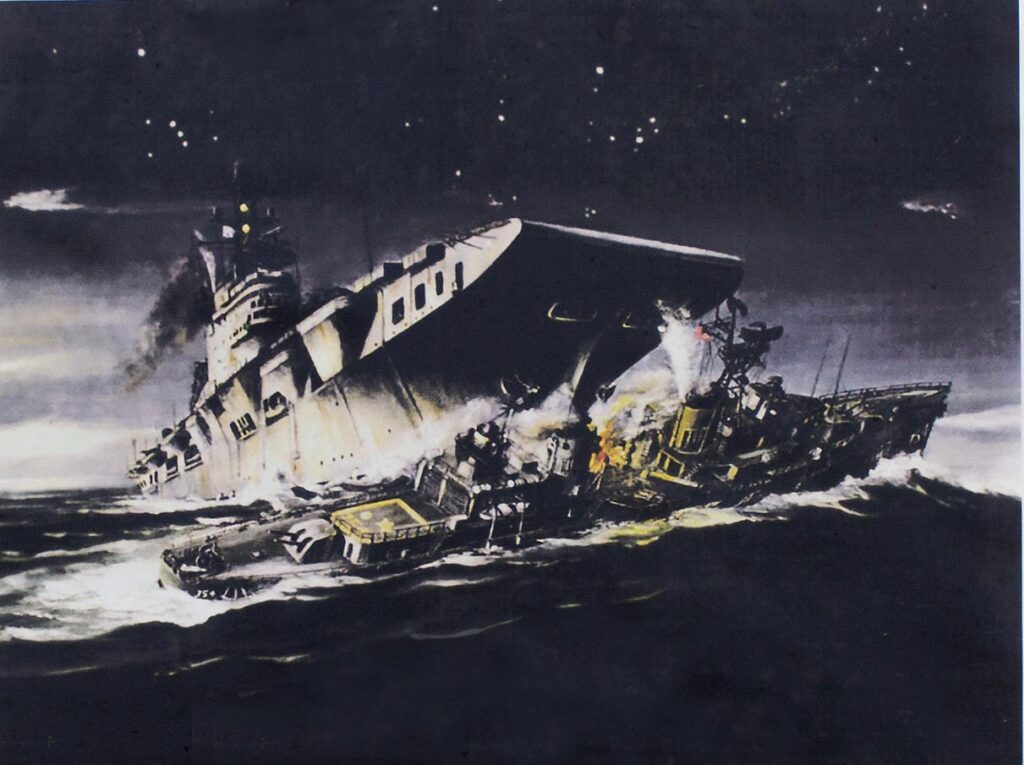
USS Frank E. Evans – Commemorating a Timeless Legacy
Because the incident took place about 100 miles outside the official Vietnam War combat zone, despite subsequent sentiment and efforts, the fallen are not named on the Memorial Wall in Washington, DC. “‘After surviving an epic sea battle in 1945 off Okinawa, in which she had repulsed 150 kamikaze planes, shooting down 50,’ one historian concludes, ‘the Evans ignobly went to her death through poor navigation.’ “In the end, there were a number of conflicting testimonies about the naval technicalities of speed, course, lighting, and orders given associated with what actually happened. Regardless, the sailors and officers aboard that morning felt and saw what they saw. The USS Frank E. Evans earned one battle star for World War II, five battle stars for Korea, and five battle stars for her service in the Vietnam War. She also received the Navy Unit Commendation, E Ribbon, and Ney Memorial Award. Our Navy developed a training film based on the collision entitled, “I Relieve You, Sir.”
Today, there are a total of seventy-five official public memorials remembering this fighting ship and her crew in thirty-four States, including five in Australia. She gave her all and then some.
Read About Other Famous Military Units
If you enjoyed learning about USS Frank E. Evans, we invite you to read about other Famous Units on our blog. You will also find military book reviews, veterans’ service reflections and more on the TogetherWeServed.com blog. If you are a veteran, find your military buddies, view historic boot camp photos, build a printable military service plaque, and more on TogetherWeServed.com today.
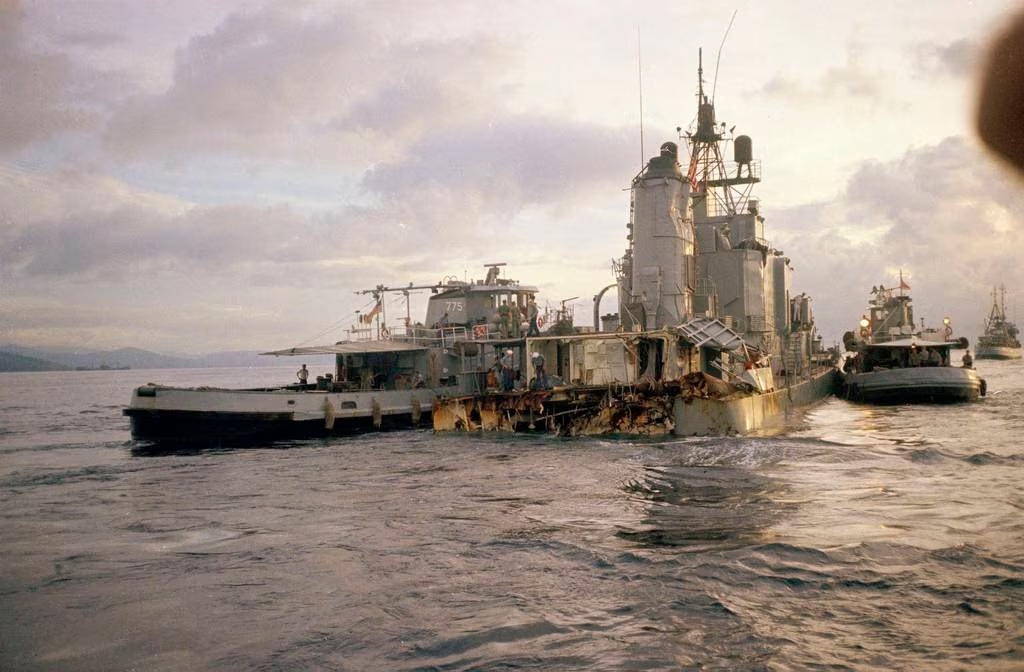
Great story. Such a tragic loss of crew. The names of those 74 lost sailors should be added to Vietnam Veteran Memorial.